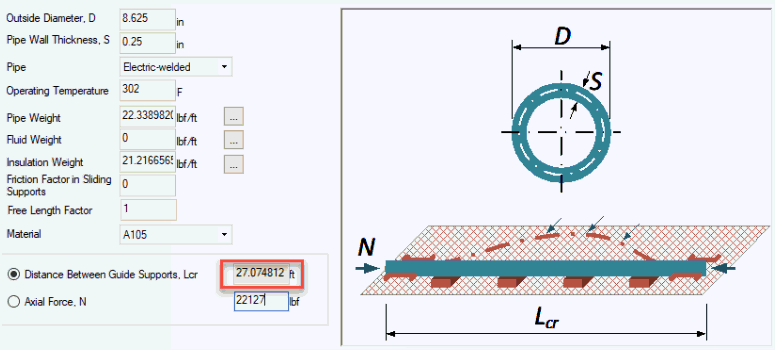

Read about PASS/START-PROF pipe stress analysis software
Tall pipe risers are used in skyscrapers, mines, and similar structures. Stress engineers must address two key considerations:
Most pipe stress analysis software, including PASS/START-PROF, apply fluid weight as uniform load along pipe length. This approach works for horizontal piping and short vertical runs but produces incorrect results for tall risers, leading to inaccurate support loads and stress distribution.
Figure (a) below shows axial force F diagram from uniform load q in a bottom-supported vertical pipe. Applying fluid weight as uniform load q creates incorrect axial force distribution. Software calculates high axial stresses (q*L/A, where A is pipe cross-sectional area), but actual fluid pressure acts only at pipe bottom, resulting in zero axial stresses along the pipe length. Correct modeling requires applying concentrated force at pipe bottom instead of uniform load.
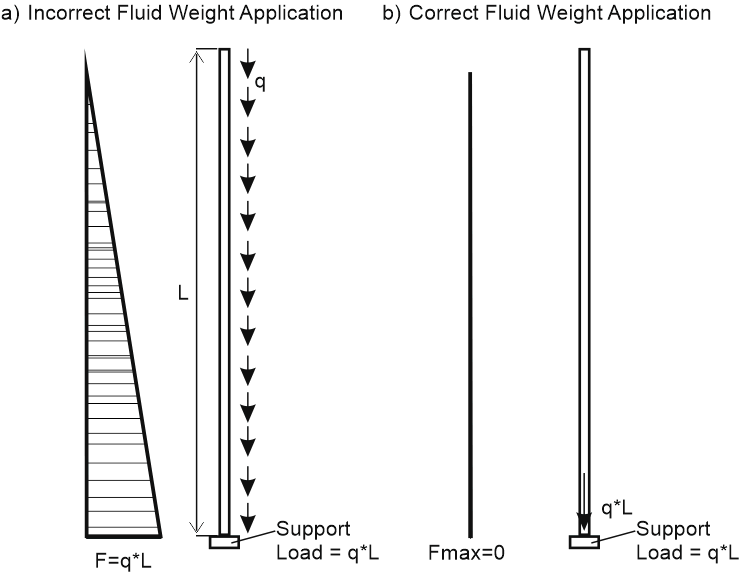
Vertical Pipe Supported at Bottom
For top-supported pipes, uniform load also produces incorrect results, underestimating axial stresses in lower pipe sections.
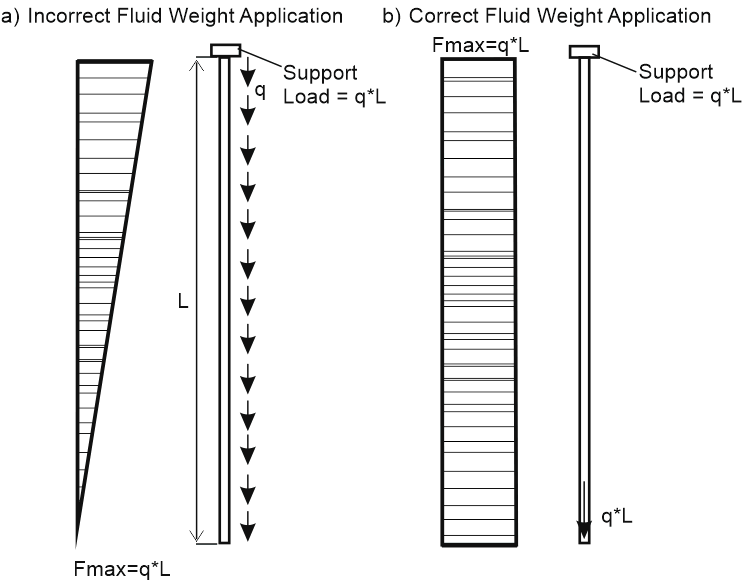
Vertical Pipe Supported at Top
For risers supported by multiple springs, uniform fluid weight distribution incorrectly loads all supports equally. Actual fluid weight acts at bottom bend, concentrating load on lowest support.

Vertical Pipe Supported by Multiple Springs
Correct modeling procedure in PASS/START-PROF:
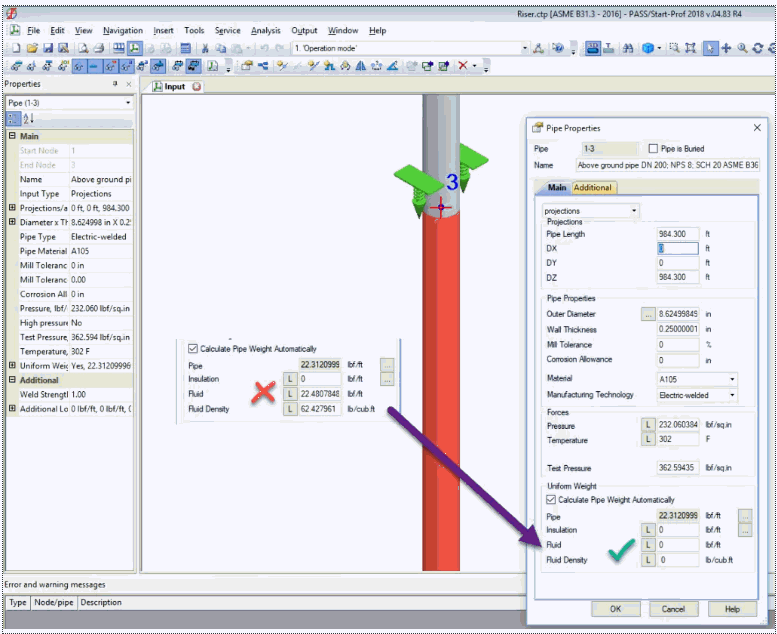
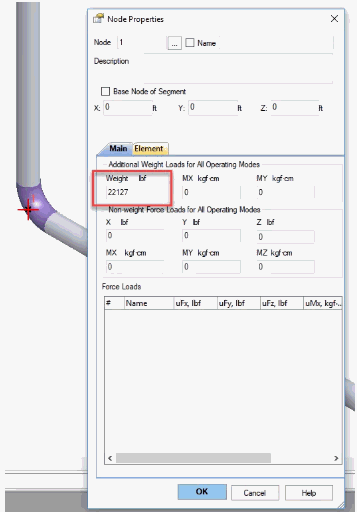
For tall risers, include hydrostatic pressure in calculations. Split vertical pipeline into segments and set pressure for each segment as P+γ·h, where P is internal pressure at top, γ is fluid density, and h is depth from top point to segment midpoint or lowest point.
Bottom-supported vertical risers experience compression from pipe and insulation weight. Compression forces can cause buckling as shown in figure (a) below.
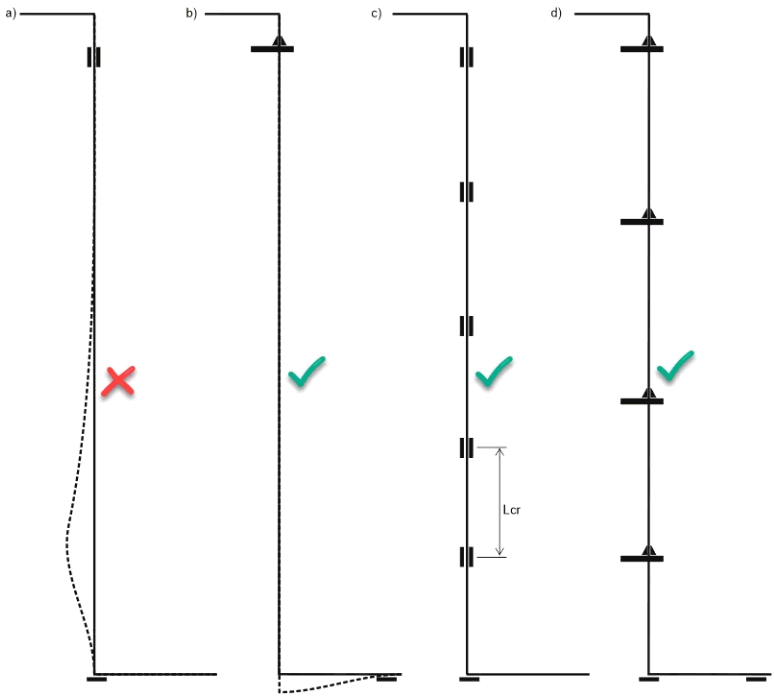
Prevent buckling by adding V-stop supports (d) to reduce compressive force or installing guides (c) to restrain lateral movement.
PASS/START-PROF includes specialized buckling analysis for vertical and horizontal pipes. For vertical pipes, set sliding support friction factor to zero and input compressive load N value. Software calculates required guide spacing Lcr to prevent buckling.
